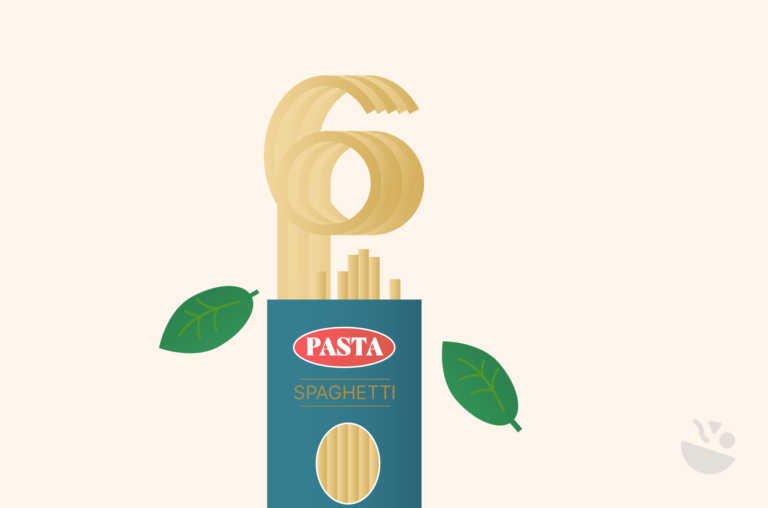Starting a food business doesn’t have to drain your savings account. Most people assume they need big money to get into the food industry, which explains why 92% of potential entrepreneurs never actually start their businesses – they’re scared of the upfront costs.
But what if starting a food business didn’t require taking out a second mortgage? What if some of the most successful food entrepreneurs started with less money than you’d spend on a decent laptop?
The food industry is full of small food business ideas with small capital requirements, often under $500 or even $100. The cheapest food business to start typically uses skills you already have. For example, food blogging and meal planning need just your knowledge and a computer. The most profitable food businesses solve specific problems for customers willing to pay for quality or convenience.
This guide covers 10+ proven food business ideas organized by startup costs, from ultra-low budget options to $15,000 investments, plus practical steps for getting started and overcoming common challenges.
Why start a small food business?
With so many small food business ideas available, it’s easier than ever to find one with lower overhead costs, making it ideal for aspiring entrepreneurs. The food industry offers incredible opportunities, especially for those starting with minimal capital. Many small food businesses thrive today thanks to strong consumer demand for niche and artisanal options, giving innovative businesses a real advantage. More people are prioritizing quality over quantity and are willing to pay more for products that align with their values, like sustainability, transparency in ingredients, and local sourcing.
Profitable food businesses often include options like specialty baked goods, home-based catering, and artisanal food products, which have lower overhead and cater to niche markets with high demand. Starting a small food business can cost as little as $100 for ultra-low capital ideas, while businesses like meal kit services or mobile food carts may require investments of up to $15,000.
Small food business ideas by investment level
Here’s a quick overview of food business opportunities organized by startup capital requirements:
| Investment level | Budget range | Business ideas | Typical profit margins |
| Ultra-low capital | $100-$1,000 | Food blogging, online cooking classes, meal planning service, recipe development. | 60-80% |
| Low capital | $1,000-$5,000 | Home-based catering, artisanal products, meal prep service, food photography, specialty baked goods. | 40-60% |
| Medium capital | $5,000-$15,000 | Food delivery service, ghost kitchen, meal kit business, mobile food cart, farmers market vendor. | 20-40% |
Ultra-low capital small food business ideas ($100-$1,000)
If you’re looking for food business ideas with low investment, consider options like food blogging, online cooking classes, or meal planning services, which generally need $100 to $1,000 to start.
Food blogging
Starting a food blog can turn a hobby into a profitable business, whether you share recipes, reviews, or other food-related content. WordPress is an ideal hosting platform for this, offering flexibility through food themes and plugins that let you design a custom blog. Setting up a WordPress food blog can be done on a budget, as there are hosting plans, themes, and plugins at various price points.
Extensions like WP Recipe Maker are a must-have for any WordPress food blogger. It works by enhancing your content, making it both visually appealing and SEO-friendly as your blog grows.
Once your website is up and running, you’ll face the typical challenges that any small enterprise must contend with – such as developing a consistent content schedule, building an audience, and generating income. Fortunately, however, food blogs can be monetized in a wide variety of ways, such as through:
- Writing sponsored posts.
- Selling digital cookbooks.
- Selling online courses.
- Ad revenue.
- Affiliate marketing.
The last option is usually what people go for when trying to earn some extra money from food blogging. If you want to take your food business in this direction, WP Recipe Maker offers you an easy way to include affiliate links for ingredients and cooking equipment.
Online cooking classes
Online cooking classes are a flexible, low-cost way to turn culinary skills into income, with only basic equipment needed. With live or pre-recorded classes, you can earn through fees, subscriptions, or brand partnerships. As at-home learning grows, scaling options include creating course series, memberships, or specialized topics. Platforms like Udemy, Teachable, or WordPress help you reach a wider audience.
Meal planning service
Meal planning services cater to busy or health-conscious clients, requiring minimal startup costs. For under $500, you can create tailored meal plans, recipes, and grocery lists to meet specific dietary needs. Income options include subscriptions or one-time packages for diets like vegan or keto. While certification isn’t required, a nutrition background boosts credibility. Scaling options include add-ons like consultations and downloadable plans, helping expand your reach.
Recipe development
Recipe development is a creative, low-cost business opportunity, ideal for designing unique recipes for brands, blogs, or individual clients. With a small budget for ingredients and tools, you can document creations with just a computer and camera. Income streams include freelance projects and selling recipes, while contracts with brands can protect your work. As your reputation grows, scale by creating a digital recipe library or publishing a cookbook.
Low capital small food business ideas ($1,000-$5,000)
Home-based catering
Home-based catering is a flexible entry into the food industry for those skilled in cooking for groups. With $1,000-$5,000 for equipment, ingredients, and permits, you can start a small catering business offering medium to high profit margins. Legal requirements typically include food handling certifications. Scale by expanding your menu, upgrading equipment, and marketing to larger events like weddings or corporate functions.
Meal prep service
Meal prep services cater to busy clients seeking convenient, ready-to-cook meals. With $1,000-$5,000, you can invest in ingredients, packaging, and necessary licenses. This model supports recurring income through weekly or monthly subscriptions, with bulk ingredient purchases yielding good profit margins. Food handling certifications are often required. Scale by expanding menu options, offering custom plans, or partnering with fitness professionals to grow your client base.
Food photography
Food photography is a visually driven business that can complement other food industry roles or stand alone. With $1,000-$5,000, you can invest in a camera, lighting, and props for professional-quality shoots. High-quality images attract clients like food brands and restaurants, often yielding favorable profit margins. While no specific licenses are required, image licensing agreements can be useful for larger clients. Scale by adding services like recipe development or social media content creation for a comprehensive visual package.
Specialty baked goods
Specialty baked goods, such as gluten-free or keto-friendly treats, cater to niche dietary preferences and high demand. Startup costs cover specialty ingredients, baking equipment, and permits, while high profit margins come from customers willing to pay more for quality. Legal requirements vary but typically include food handling certifications and labeling. Scale by expanding offerings, partnering with local cafes or markets, or offering subscription boxes. With unique recipes and quality focus, specialty baked goods can become a popular, profitable business.
Medium capital ideas ($5,000-$15,000)
Food delivery service
A food delivery service offers fresh, prepared meals straight to customers’ doors, with strong profit potential as people pay a premium for convenience. Startup costs cover bulk ingredients, packaging, and delivery logistics. Legal requirements often include food handling certifications, health permits, and possibly a delivery license. Scale by expanding your delivery area, adding menu options, or partnering with local businesses.
Ghost kitchen
A ghost kitchen is a delivery-only business model that minimizes overhead by avoiding the costs of a traditional restaurant. Startup costs cover kitchen rental, equipment, and supplies. Ghost kitchens offer high profit margins and require health permits, food safety certifications, and zoning permits. Scale by adding menu options, partnering with delivery platforms, or expanding to new locations to reach more areas, making this ideal for specialized cuisine in urban settings.
Small-scale meal kit business
In recent years, meal kit businesses such as Hello Fresh and Blue Apron have exploded in popularity. After all, they tap into a large demographic of consumers looking for an easy way to prepare fresh meals at home.
Again, there are many ways in which you can limit your spending when launching this kind of brand. For example, you can cut costs by sourcing local ingredients from other small businesses and delivering within a limited area.
Of course, you must consider the logistical challenges of a meal-prepping and food-delivery business. You must ensure that you collaborate with trustworthy local suppliers, manage health and safety standards, and maintain a database of appealing recipes.
While you may want to start offering basic meal kits, you can increase your profitability over time by introducing premium dishes or add-ons, such as side dishes and desserts. You can also form profitable partnerships with local suppliers.
Specialty food products
Artisan food products are high-quality handmade goods, often made with locally sourced ingredients. There are many different types of artisan foods, including:
- Bread
- Pastries
- Cheese
- Chocolate
- Jams
- Sauces
- Pickles
- Baked goods
Although they’re often considered something of a luxury product, this kind of business requires minimal investment on behalf of the owner. After all, you can start from the comfort of your home with basic cooking equipment and sell your artisan goods online, through retail partnerships, at a local farmers market, or through partnerships with a food truck business.
In time, as your business grows, you can afford to get fancier equipment, which will open up even more opportunities in the future.
As consumers become more health-conscious, there’s a growing demand for organic food and goods, so much so that people seek them out over fast food items. In fact, one report found that the US Artisan Bakery Market, which was worth $25.7 billion in 2021, is predicted to surpass $30.1 billion by 2028. When selling artisan products, the time and effort required to create them mean you can command a higher price than you’d be able to for mass-produced goods, allowing for a better return on investment (ROI).
Mobile food cart
A mobile food cart is a flexible, low-cost alternative to a full-service restaurant, ideal for busy public spaces or events. Startup costs cover a cart, permits, and inventory, with high profit margins due to flexible pricing. Legal requirements typically include food handling and vending permits, health inspections, and possibly a business license. Scale by adding carts in high-traffic areas or expanding the menu to attract more customers.
Farmers market vendor
Setting up as a farmers market vendor lets you sell directly to consumers, especially with locally made or organic items. Startup costs cover ingredients, packaging, and booth fees, with high profit margins from customers seeking quality products. Legal requirements often include food handling certifications and may include specific vendor labeling rules. Scale by expanding to more markets, diversifying products, or establishing an online presence for additional sales.
How to start a small food business
Step 1: Identify your niche and target market
Research current market trends and analyze your competition to find gaps you can fill. Define your unique selling proposition (USP) by identifying what makes your product or service different from existing options.
Step 2: Research legal requirements and certifications
Look into food safety regulations, required permits and licenses for your area, and cottage food laws if operating from home. Understand labeling requirements and Good Manufacturing Practices (GMP) that apply to your business type.
Step 3: Create a business plan with startup costs and revenue projections
Outline your business model, set SMART goals (specific, measurable, achievable, realistic, time-bound), and develop a contingency plan. Calculate realistic startup costs and revenue projections based on market research.
Step 4: Source equipment and suppliers
Establish quality standards for ingredients and products, compare costs from multiple suppliers, and consider packaging options. Build strong supplier relationships that can grow with your business.
Step 5: Set up your physical or virtual business presence
Secure appropriate space for your operations, develop your branding and visual identity, and set up ordering and payment systems. Create an inventory management system that tracks supplies and finished products.
Digital presence setup
Establishing a strong digital presence is vital for a small food business to reach a broader audience, build credibility, and streamline sales and customer engagement. Here’s how to effectively create and optimize your online presence:
Build a high-impact website for your food business
Your website is the heart of your food business, allowing customers to explore your products, place orders, and engage with your brand. For small businesses, WordPress offers the perfect blend of flexibility and affordability, allowing you to design a professional, user-friendly site with intuitive navigation, clear product descriptions, and stunning visuals.
Popular WordPress food themes like Foodie Pro, Bakes & Cakes, or Foodica provide professional designs specifically tailored for food businesses.
Ensure your website is mobile-friendly since most food customers browse and order on their phones. SEO optimization is equally important for food blogs to attract organic traffic through recipe searches and food-related content.
To simplify online sales, integrate WooCommerce, a WordPress-friendly eCommerce tool that handles inventory, payments, and order tracking with ease. For food businesses sharing recipes, WP Recipe Maker plugin adds value by creating beautiful, SEO-friendly recipe cards that engage users and boost traffic. With features like affiliate links, you can start a successful food blog and create a digital space that drives growth and builds community!
Social media strategy
An effective social media strategy is essential for expanding your reach and engaging with customers. It’s possible to monetize platforms like Instagram, Facebook, and Pinterest with sponsored posts, affiliate marketing, and more.
Social media also lets you share visually compelling content and interact with followers directly. Use these platforms to showcase product photos, recipes, behind-the-scenes content, and customer testimonials, all of which help build a loyal community around your brand. Consistent posting and meaningful engagement will establish your business as a trusted source of quality food and inspiration.
Common challenges & solutions
Operating a small food business comes with specific challenges. Here’s a breakdown of obstacles and straightforward solutions to overcome them:
Capital management
Challenge: Limited initial capital can make it hard to cover essential expenses, especially in the early stages.
Solution: Start with a streamlined budget and track every expense closely. Begin with a focused product line, expanding gradually as profits grow. Seek alternative funding sources like microloans, grants, or crowdfunding to boost initial capital without taking on major debt.
Marketing on a budget
Challenge: Effective marketing can be costly, yet it’s crucial for brand growth.
Solution: Use affordable digital marketing strategies. Social media is cost-effective for showcasing products and connecting directly with customers. Email marketing and content marketing (like recipes or tips) also attract customers without major expenses. Partner with local influencers or food bloggers to expand your reach with minimal investment.
Scaling strategies
Challenge: Scaling requires resources and process adjustments, which can strain a small business.
Solution: Grow sustainably by expanding one area at a time. Introduce new products or partner with local stores to broaden distribution. Optimize processes (batch cooking, automated ordering) to handle increased demand efficiently, allowing you to scale without overwhelming resources.
Quality control
Challenge: Consistent product quality is crucial, especially in the food industry, where customer expectations are high.
Solution: Use standardized recipes and procedures to ensure consistency. Regularly taste-test products and review feedback to make improvements. If working with additional staff, provide thorough training and monitor performance. Prioritizing quality control will help build a loyal customer base.
Time management
Challenge: Running a small food business requires juggling multiple roles, which can be overwhelming.
Solution: Use a daily or weekly schedule to prioritize tasks. Productivity tools, such as task management apps, can help organize deadlines and goals. Outsource tasks like social media management or bookkeeping when possible, allowing you to focus on core activities.
Food safety and regulatory compliance
Challenge: Navigating complex food safety regulations and compliance requirements can be overwhelming for new food business owners.
Solution: Research local regulations early in your planning process and consider consulting with food safety experts for guidance. Implement proper documentation systems to track compliance and prioritize training in food safety standards for yourself and any staff.
Elevate your small food business ideas with WP Recipe Maker
Starting a food startup doesn’t have to require major upfront costs. Whichever of the ideas you pursue, setting up a website is essential for building your brand and streamlining marketing. WP Recipe Maker can enhance your food business by making it easy to share professional, SEO-optimized recipes that engage customers.
The plugin integrates with WordPress food themes like Foodie Pro, Bakes & Cakes, and Foodica, creating a cohesive professional appearance for your food business website.
Plus, WP Recipe Maker suits a variety of food startup models:
- Nutritionists can share personalized recipes with clients.
- Meal planning providers can create curated plans and shopping lists.
- Food photographers can showcase recipes alongside their work.
- Microbreweries can present step-by-step brewing processes.
- Food influencers can easily integrate recipes into their content for better reach.
Ready to turn your small food business ideas into reality? WP Recipe Maker helps you build authority through professional recipe presentation, boost search engine visibility with structured data, and monetize your content through affiliate marketing features.
Start building your food business website today and create the professional online presence that drives growth and customer engagement.






